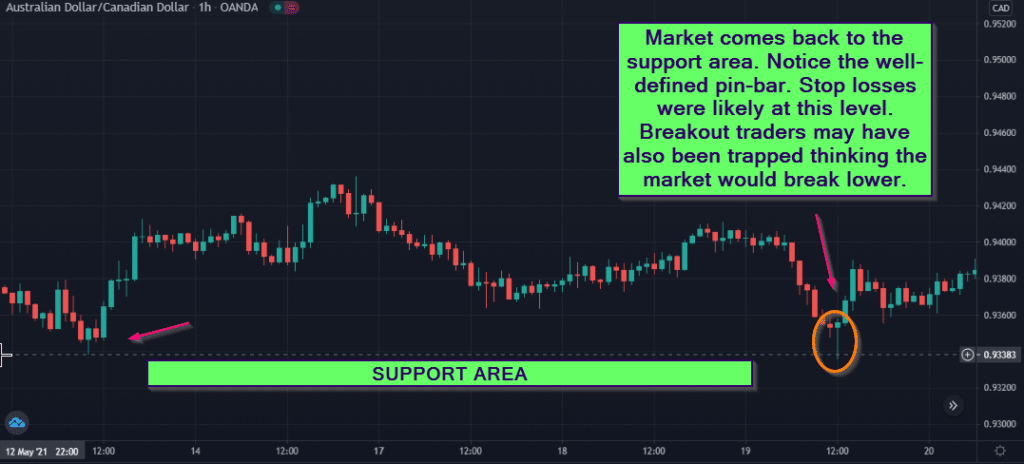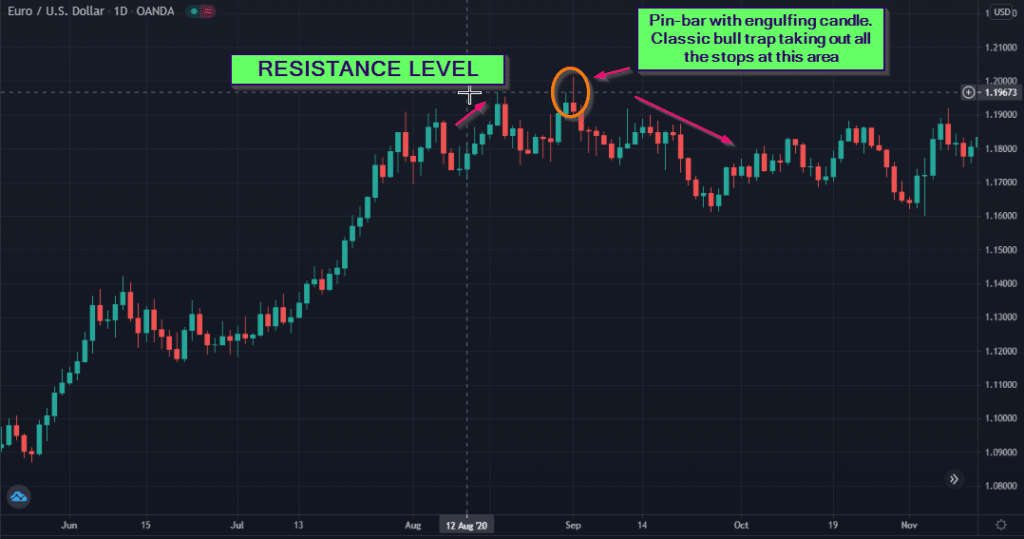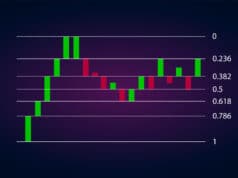One of the most contentious topics in forex is stop hunting; does it really exist, are brokers conspiring against their traders, and is it avoidable?
Regardless of the trading style, stop hunting is an easily noticeable phenomenon across all time frames and affects every trader whether they are conscious of it or not. It is one crucial concept of thoroughly understanding the market structure and how the big players conduct their orders.
As a retail trader, it becomes even more critical to avoid a few stop loss mistakes because of this occurrence.
What is stop loss hunting?
Stop loss hunting refers to an overwhelmingly large number of liquidated stop losses at specific key areas on a chart. The ‘hunting’ is the long-held belief the big players, namely institutional traders, purposefully ‘hunt’ for retail speculators’ stop losses for liquidity purposes.
In a decentralized market like forex with no accurate method of seeing the order flow of the entire market, it is not possible to verify this perception. Still, we do know it is not something the average group of traders can cause by themselves.
We can observe stop hunting, particularly in reversal moments in certain major areas like support and resistance. It is less significant in pullbacks during trends. The resulting price action is typically pin-bars or long-wick candles within the level in question, as in the image below.

As it’s already well-documented, forex is the most leveraged financial instrument, meaning stop orders are crucial. Analysts assume many retail investors are heavy speculators who tend to misuse high margins.
Unfortunately, if the trader either uses tight stops, no stop at all, or is trapped in a false breakout (bull and bear traps), forced liquidation occurs since they cannot hold a losing trade for long periods.

The question then arises, why would the so-called ‘big players’ hunt the stops in the first place?
The causes of stop hunting
The cause of stop hunting boils down to how the big players enter into positions and exploit support and resistance. Retail traders trade volumes with little impact on movement after entry; this is not the case for their counterparts.
Institutional speculators typically look for market tops and bottoms to get the best possible entry. However, the volume of their positions is substantial and can create a noticeable and undesirable impact on price.
In essence, the big players cannot enter a trade at once but rather do so in chunks. Stop losses represent liquidity, allowing them a much better filled with the desired size. Let’s go over an illustration.
Example
Let’s assume we are trading EUR/USD, and the most apparent support level is 1.500. Yet, the current price is 1.530. It is possible for the big players to simply buy at this level which would cause prices to move upwards.
The problem then becomes this price is not as desirable as the 1.500. It’s important to note that there needs to be a party willing to sell the quote currency in the pair for every buy order.
For instance, a buy position on EUR/USD means buying euros while simultaneously shorting USD. All this activity represents liquidity at every price level facilitating foreign exchange.
The same concept also applies to stop losses. For there to be a considerable up-move, a larger group of traders need to sell USD.
Because of the conventional knowledge of placing stops at support and resistance levels, the big players see this area as the best place to move price towards it purposefully and ‘hunt’ for those stops.
At this point, there is a substantial number of ‘selling USD’ orders, offering the big players a better place to ‘buy EUR.’
Avoiding stop hunting
A commonly-held myth is that brokers hunt stops. For the most part, this is not true, at least for regulated entities. An unscrupulous market maker brokerage could perhaps widen the spread on certain occasions, nearing the price to a trader’s stop.
However, generally, it is bad for business for regulated brokers and detrimental to their reputation. So, the first step is dispelling this belief and appreciating that stop hunting is due to inherent market forces. More technically, traders should understand the following points to avoid being a victim:
- Never placing stops at obvious key levels: Perhaps the main solution to prevent suffering from stop hunting is to never have the stop orders at clear support and resistance levels.
Typically, ill-informed traders will place their stops X number of pips at the most recent swing high or low. Research has suggested stops tend to linger at psychological round numbers, i.e., prices ending in 00.
Thus, a smart trader will want to have their stop several pips below or above such areas while adequately accounting for the volatility, leading to the next point.
- Never using tight stops: Using tight stops is also a big mistake. Some traders want to trade a larger position size due to greed, necessitating a smaller stop loss. The problem is the stops are often within the average volatility of the market.
Therefore, a trader is likely to be stopped out quickly from normal fluctuations. Another issue is these tight stops are in evident support and resistance areas, making the problem even worse.
The ATR (Average True Range) is a non-directional volatility indicator reflecting the average pip range an instrument has moved over a specific time frame. For instance, it may show EUR/USD has moved 30 pips over the last four hours.
Ideally, a trader will want to base their stop using the ATR of a higher time frame. For example, if they are trading the 1-hour time frame, ideally, it’s best to use ATR of the 4-hour time frame to prevent being kicked out of their positions too soon.
Final word
Understanding stop hunting helps traders in many ways. For starters, this frequent event occurs on all time frames in the market but is more significant in big reversal moves. It is quite integral to the market structure overall.
Price action traders, especially those trading patterns like pin bars and engulfing candles, can take advantage of stop hunting after recognizing its inner workings.
Using a stop loss correctly is a crucial component to managing risk. However, it’s even more vital to understand stop hunting because it greatly affects how traders use their stop loss and the potential for a big move.




